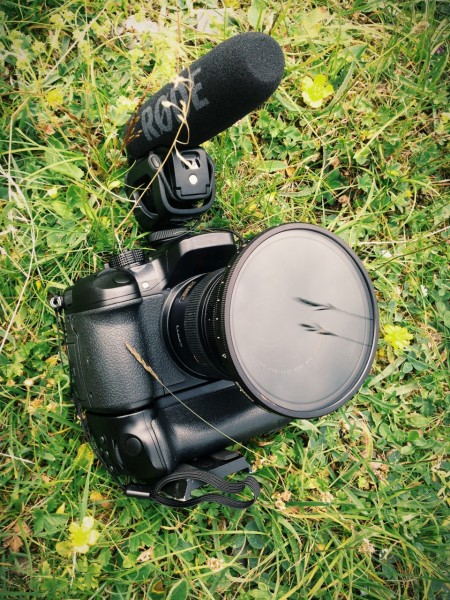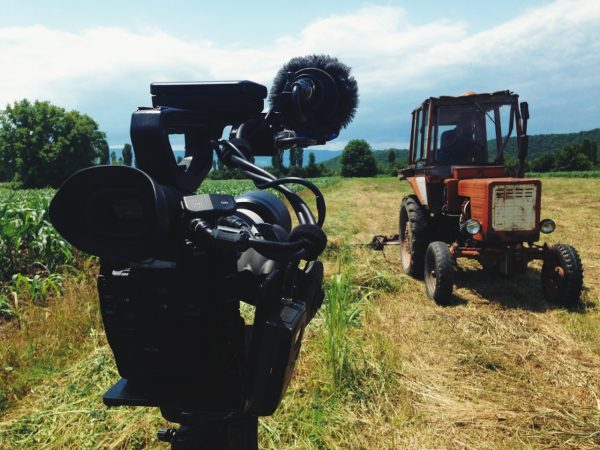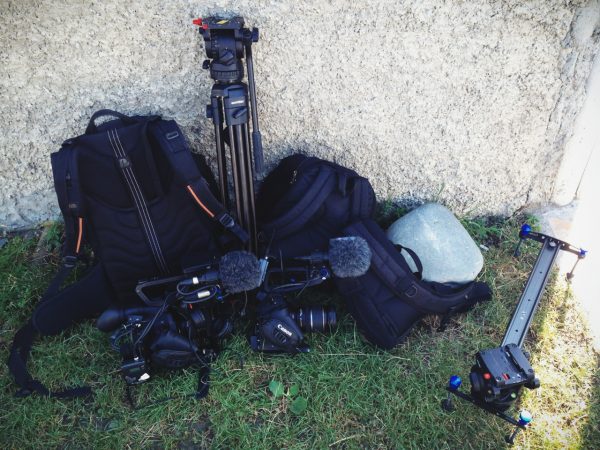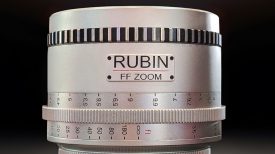Guest post by Nicos Argillet:
After spending a week with the GH4, I had to fly to Georgia in the Caucasus to direct a documentary for France 5, one of the French national TV channels. I thought it would be the perfect opportunity to test the GH4 in a real production environment and see how it could match our C300 and C100 in the field. Here is a quick edit of the results.
Note that I am not a colorist nor a pixel peeper but a director and DP who is trying to understand his tools and share what he learned. All shots were only slightly graded in Premiere CS6 using the basic color correction tools to match exposure and roughly set the black/white/saturation levels.
All C300/C100 shots are C-Log. All GH4 shots used the Natural profile with sharpness and noise reduction set to -5, and contrast and saturation between -3 and -5, depending on the scene. Master Pedestal was set to +10. Curves, iDynamic and iResolution were set to their default settings.
This is the profile I found works best for me after testing during my first week with the camera – but please share your profiles too.
I didn’t try to match the tints as I wanted to check how close I could get the results straight ‘out of the camera’. The GH4 had a Schneider True Match Vari ND in front of the lens, which while being one of the more natural looking ND solutions out there may still give the image a twist.

So, what did I learn? Looking at the landscape shots from the GH4 I am pretty impressed with the results. Shooting in 4K and editing on a 1080p timeline gives a pretty close match in terms of resolution and very nice rendering.
On the dynamic range side, the GH4, in the way I had it set, is definitely not as good as the Canon cameras. It may not be completely obvious from the video above but the GH4 just can’t handle as much difference between highlights and shadows as well – the reason for that is the noise level.
All shots on the C300 were done between 850 and 1600 ISO. GH4 was set to 200 ISO. To my eyes, the noise of the GH4 at 200 ISO is as visible as 1600 ISO on the C300. The other thing I noticed is that the GH4 can be very noisy on the dark part of the image. When shooting a mountain top with a forest below, if you set the exposure to protect the sky, the forest – although clearly visible – would become really noisy. Even though the GH4 seemed to capture those dark stops, it was capturing it with a lot of noise.

For me it means that protecting the highlights and underexposing like you could do on a C300 is problematic on the GH4 as the grade would bring too much noise. For the same reason I believe that trying to increase dynamic range with picture profiles will only show noisier shadows.
On the other side, the GH4 has some great tools that the C300 does not. It can do time lapses straight in camera, which is a big time saver and a very cool feature. I used that feature a lot during our shooting and I am very pleased not to have to bring another stills camera just for timelapse. On the C300 the under-crank is just rubbish. On the GH4 you just decide how many frames you want (like 250 for 10 sec. on a 25P timeline), the time interval, and let it roll for the next 12, 30, 60 minutes… In the end the video is created in camera and there you go, a nice time-lapse. Brilliant !
The GH4 also has very cool slow-motion possibilities. I didn’t use those during this shoot because it wouldn’t match our story. But for more creative shooting it is definitely a plus.
Technical limitations asides, the GH4 proved to be a really great tool for our shooting environment, especially because it is so ergonomic.
When shooting abroad in remote areas, we usually take with us a C300 as our A camera and a C100 as a B camera. But when conditions of shooting imply long hiking sessions or when battery life becomes more important than image quality then the C300 just stays home and the C100 becomes the A camera. It’s in those situations that I was really hoping the GH4 could be a good sidekick.

When shooting all year long with a camera like the C300 you become very choosy about the camera you shoot with: the C300’s EVF is very good, the screen beautiful, the electronic NDs classy…
All of that gives you a certain feeling of luxury. But in the first place I had to reassign a lot of stuff to make it the way I wanted (no ISO button Canon, really?) In comparison, after only few hours with the GH4, I was feeling at home. Just being able to put your eye to your camera, like you would normally do when taking photos, gives you a natural feeling of doing things the right way. From there the WB, ISO and Magnify buttons (assigned in my case to the FN1 button) can be pressed and dialled instinctively. Assigning peaking and zebras to FN buttons 2 and 3 makes it easy to turn them on and off according to your needs. The flip screen is just something you wonder how you lived without.
One week with the GH4 from Nicos A. on Vimeo.
On the firmware side the GH4 has for me two very important features: The ability to turn each screen display on and off easily, and a to set a free-run timecode. The timecode option alone is a big time-saver in post production.
In the end, using the two cameras side-by-side was painless. Even though I am so used to my C300 buttons layout I could easily switch my mind to using the GH4. And trust me: changing between two different cameras when you are in a rush is usually not that easy.
When you add on top of that the GH4 form factor, size, weight, battery life and media capacity, it’s just the perfect tool for those kind of jobs.
With only a battery grip, a vari ND and a reference mic, I was able to shoot all day in all conditions, even when riding a horse.
The other thing that strikes me is how good is the Panasonic 12-35mm f/2.8 lens is. When I bought the camera I was really hoping for Metabones to release an active EF to MFT adapter. I am not anymore. I wouldn’t add any more weight to my package. The Panasonic 12-35mm and 35-100mm f/2.8 zooms are in my opinion just as good as the equivalent focal range canon zooms are for the C300/C100 cameras, minus the weight and with more depth of field.
Of course, there are some downsides. The EVF is not as good as the one on the C300, the screen is not very bright, the peaking is not the best in the world and you need a vari ND on top of your lens…but who cares? It gets the job done.
And if you want to the truth, the GH4 EVF is still better than the one on the Canon C100 – I just hate the screen on it.
Despite all these virtues, the real test was to see how well I could match the Canon cameras and the GH4. Looking at the images from the two cameras side by side, and especially the interview parts, I think that the C-series and GH4 intercut very nicely, with minimum post-production. And for me this is the most important. I can’t afford to spend hours trying to match color sciences and skin tones from completely different planets.
In the end, the GH4 maybe not be the perfect camera, but the C300 and C100 aren’t either. What matters is how effective it can be in the field. It can help me tell stories, be more responsive and travel lighter.
Gear used:
Panasonic GH4
Panasonic Battery Grip
Panasonic 12-35mm f/2.8 OIS lens
Schneider True-Match Vari ND 77mm
Cordvision 58mm-77mm setup adapter ring
Canon C300 & C100
Canon 17-55mm f2.8 EFS lens
Canon 70-300mm f4-5.6 L lens
Canon 24-105mm f4.0 L lens
C300 & GH4 operated by Nicos Argillet
C100 operated by Manuel Laigre
Music : შენმა სურვილმა დამლია
You can find out more and contact Nicos Argillet via his website.





